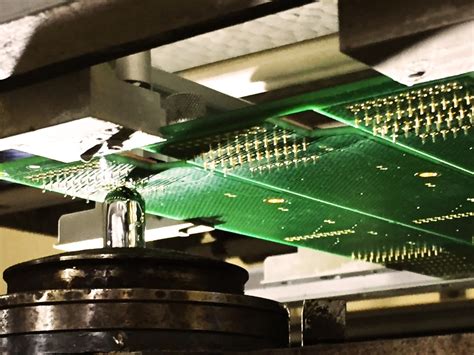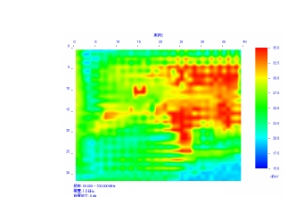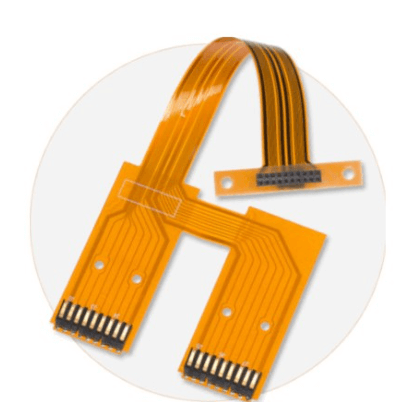Ceramic based pcb
Advantages Of Ceramic-Based PCBs In High-Temperature Applications
Ceramic-based printed circuit boards (PCBs) have emerged as a pivotal innovation in the realm of electronics, particularly in high-temperature applications. These advanced materials offer a multitude of advantages that make them indispensable in environments where traditional PCBs might falter. As industries continue to push the boundaries of technology, the demand for reliable and efficient components that can withstand extreme conditions has never been more critical. Ceramic-based PCBs, with their unique properties, are well-suited to meet these demands.
One of the primary advantages of ceramic-based PCBs is their exceptional thermal conductivity.
Unlike conventional PCBs, which often rely on materials such as FR-4, ceramic substrates like aluminum oxide, aluminum nitride, and beryllium oxide offer superior heat dissipation. This characteristic is crucial in high-temperature applications where excessive heat can lead to component failure or reduced performance. By efficiently managing heat, ceramic-based PCBs help maintain the integrity and longevity of electronic devices, ensuring consistent performance even under strenuous conditions.
In addition to their thermal properties, ceramic-based PCBs exhibit remarkable mechanical strength and stability.
These attributes are particularly beneficial in applications where mechanical stress and thermal cycling are prevalent. The inherent rigidity of ceramic materials minimizes the risk of deformation or warping, which can compromise the functionality of the PCB. Consequently, devices that incorporate ceramic-based PCBs are better equipped to endure the rigors of demanding environments, such as those found in aerospace, automotive, and industrial sectors.
Furthermore, ceramic-based PCBs offer excellent electrical insulation, which is vital for maintaining signal integrity and preventing electrical interference.
The high dielectric strength of ceramic materials ensures that electronic signals are transmitted with minimal loss or distortion, a critical factor in high-frequency applications. This property not only enhances the performance of the device but also contributes to its overall reliability, making ceramic-based PCBs a preferred choice for applications where precision and accuracy are paramount.
Moreover, the chemical inertness of ceramic materials provides an added layer of protection against environmental factors such as moisture, chemicals, and corrosive agents.
This resistance to environmental degradation ensures that ceramic-based PCBs maintain their performance over extended periods, even in harsh conditions. As a result, they are particularly advantageous in applications where exposure to challenging environments is unavoidable.
While the benefits of ceramic-based PCBs are numerous, it is important to acknowledge the challenges associated with their use.
The manufacturing process for ceramic-based PCBs can be more complex and costly compared to traditional PCBs. However, the long-term advantages they offer in terms of durability, reliability, and performance often outweigh these initial hurdles. As technology continues to evolve, advancements in manufacturing techniques are likely to reduce these barriers, making ceramic-based PCBs more accessible to a broader range of applications.
In conclusion, the advantages of ceramic-based PCBs in high-temperature applications are manifold. Their superior thermal conductivity, mechanical strength, electrical insulation, and chemical resistance make them an ideal choice for industries that demand high performance and reliability. As the need for robust electronic components continues to grow, ceramic-based PCBs are poised to play an increasingly vital role in the development of cutting-edge technologies. Their ability to withstand extreme conditions while maintaining optimal performance underscores their significance in the ever-evolving landscape of electronics.

Comparing Ceramic-Based PCBs To Traditional FR4 PCBs
Ceramic-based printed circuit boards (PCBs) and traditional FR4 PCBs represent two distinct approaches to electronic circuit design, each with its own set of advantages and limitations. Understanding the differences between these two types of PCBs is crucial for engineers and designers who aim to optimize the performance and reliability of electronic devices.
Ceramic-based PCBs are known for their exceptional thermal conductivity and mechanical stability.
These characteristics make them particularly suitable for high-power applications where heat dissipation is a critical concern. Unlike traditional FR4 PCBs, which are made from a composite material of woven fiberglass cloth with an epoxy resin binder, ceramic-based PCBs utilize materials such as aluminum oxide, aluminum nitride, or beryllium oxide. These materials inherently possess superior thermal properties, allowing ceramic PCBs to efficiently manage heat and maintain performance under extreme conditions.
In contrast, FR4 PCBs are widely used in the electronics industry due to their cost-effectiveness and versatility.
The FR4 material, a type of fiberglass-reinforced epoxy laminate, offers a good balance of electrical insulation, mechanical strength, and thermal resistance. However, when it comes to applications that demand high thermal performance, FR4 PCBs may fall short. The thermal conductivity of FR4 is significantly lower than that of ceramic materials, which can lead to overheating issues in high-power or high-frequency applications.
Moreover, ceramic-based PCBs exhibit excellent dimensional stability, which is crucial for maintaining the integrity of the circuit under varying environmental conditions.
This stability is particularly beneficial in applications that experience significant temperature fluctuations or mechanical stress. On the other hand, FR4 PCBs, while generally stable, can be more susceptible to warping or deformation under extreme conditions, potentially compromising the reliability of the electronic device.
Another important consideration is the dielectric properties of the materials.
Ceramic-based PCBs typically offer superior dielectric strength and lower dielectric loss compared to FR4. This makes them ideal for high-frequency applications where signal integrity is paramount. The low dielectric loss of ceramic materials ensures minimal signal attenuation, which is essential for maintaining the performance of high-speed communication devices.
Despite these advantages, ceramic-based PCBs are not without their drawbacks.
The primary challenge lies in their cost. The materials and manufacturing processes involved in producing ceramic PCBs are generally more expensive than those for FR4 PCBs. This cost factor can be a significant consideration for projects with budget constraints. Additionally, the brittleness of ceramic materials can pose challenges in handling and assembly, requiring careful consideration during the design and manufacturing processes.
In summary, the choice between ceramic-based PCBs and traditional FR4 PCBs depends largely on the specific requirements of the application. For high-power, high-frequency, or thermally demanding applications, ceramic-based PCBs offer distinct advantages in terms of thermal management, dimensional stability, and dielectric properties. However, for general-purpose applications where cost and versatility are primary concerns, FR4 PCBs remain a popular choice. Ultimately, understanding the unique properties and trade-offs of each type of PCB is essential for making informed decisions that align with the performance and budgetary goals of a given project.
Innovations In Ceramic-Based PCB Manufacturing Techniques
Ceramic-based printed circuit boards (PCBs) have emerged as a pivotal innovation in the electronics industry, offering a range of advantages over traditional materials such as fiberglass and metal. These advanced PCBs are particularly valued for their superior thermal conductivity, mechanical strength, and electrical insulation properties. As the demand for high-performance electronic devices continues to grow, the development of innovative manufacturing techniques for ceramic-based PCBs has become increasingly important.
One of the most significant advancements in ceramic-based PCB manufacturing is the use of Low-Temperature Co-fired Ceramics (LTCC) technology.
This technique involves layering ceramic and metal materials, which are then co-fired at relatively low temperatures. The result is a highly integrated and compact circuit board that can withstand extreme environmental conditions. LTCC technology is particularly beneficial for applications in aerospace, automotive, and telecommunications, where reliability and durability are paramount. Moreover, the ability to integrate passive components directly into the ceramic substrate further enhances the functionality and performance of these PCBs.
In addition to LTCC, High-Temperature Co-fired Ceramics (HTCC) technology has also gained traction in the industry.
Unlike LTCC, HTCC involves firing the ceramic materials at much higher temperatures, which results in even greater mechanical strength and thermal stability. This makes HTCC an ideal choice for applications that require high power handling and thermal management, such as power electronics and LED lighting systems. The development of HTCC technology has been instrumental in pushing the boundaries of what ceramic-based PCBs can achieve, enabling the creation of more robust and efficient electronic devices.
Another noteworthy innovation in ceramic-based PCB manufacturing is the use of additive manufacturing techniques, such as 3D printing.
This approach allows for the precise deposition of ceramic materials layer by layer, enabling the creation of complex geometries and customized designs that were previously unattainable with traditional manufacturing methods. 3D printing also offers the advantage of reduced material waste and shorter production times, making it an attractive option for prototyping and small-scale production. As 3D printing technology continues to evolve, it is expected to play an increasingly important role in the production of ceramic-based PCBs.
Furthermore, advancements in material science have led to the development of new ceramic composites that offer enhanced properties for PCB applications.
For instance, the incorporation of materials such as aluminum nitride and silicon carbide into ceramic substrates has resulted in PCBs with improved thermal conductivity and electrical performance. These materials are particularly useful in high-frequency applications, where minimizing signal loss and maintaining signal integrity are critical.
In conclusion, the innovations in ceramic-based PCB manufacturing techniques have significantly expanded the capabilities and applications of these advanced circuit boards. From LTCC and HTCC technologies to additive manufacturing and novel ceramic composites, each advancement has contributed to the creation of more reliable, efficient, and versatile electronic devices. As the electronics industry continues to evolve, the demand for high-performance PCBs will undoubtedly drive further research and development in this field. Consequently, ceramic-based PCBs are poised to play an increasingly important role in meeting the challenges of modern electronic design and manufacturing.
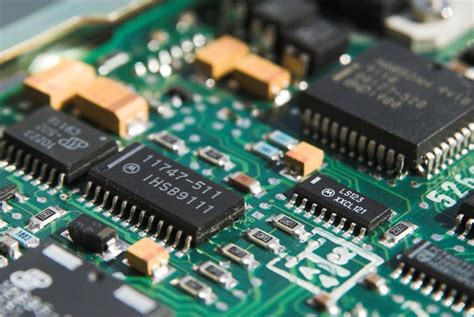
The Role Of Ceramic-Based PCBs In Modern Electronics
Ceramic-based printed circuit boards (PCBs) have emerged as a pivotal component in the landscape of modern electronics, offering a range of benefits that cater to the ever-evolving demands of technology. As electronic devices become increasingly sophisticated, the need for materials that can withstand high temperatures, offer superior thermal conductivity, and provide mechanical stability has become paramount. Ceramic-based PCBs, with their unique properties, are well-suited to meet these requirements, thereby playing a crucial role in the advancement of electronic applications.
To begin with, one of the most significant advantages of ceramic-based PCBs is their exceptional thermal management capabilities.
Unlike traditional PCBs, which are typically made from materials such as FR-4, ceramic substrates offer superior thermal conductivity. This property is particularly beneficial in high-power applications where heat dissipation is critical to maintaining the performance and longevity of electronic components. For instance, in power electronics and LED lighting systems, the ability of ceramic-based PCBs to efficiently dissipate heat ensures that the components operate within safe temperature ranges, thereby reducing the risk of thermal failure.
Moreover, ceramic-based PCBs exhibit excellent mechanical stability and reliability, which are essential attributes in demanding environments.
These PCBs are often used in aerospace, automotive, and military applications, where they are subjected to extreme conditions such as high temperatures, vibrations, and mechanical stress. The inherent strength and durability of ceramic materials make them ideal for such applications, as they can withstand these harsh conditions without compromising performance. Furthermore, the dimensional stability of ceramic-based PCBs ensures that they maintain their structural integrity over time, which is crucial for the reliability of electronic systems in critical applications.
In addition to their thermal and mechanical advantages, ceramic-based PCBs also offer superior electrical insulation properties.
This is particularly important in high-frequency applications, where signal integrity is paramount. The low dielectric constant and loss tangent of ceramic materials help minimize signal loss and crosstalk, thereby enhancing the performance of high-speed electronic circuits. As a result, ceramic-based PCBs are increasingly being used in telecommunications and RF applications, where maintaining signal fidelity is essential.
Transitioning to the manufacturing aspect, ceramic-based PCBs are produced using advanced fabrication techniques that allow for precise control over the material properties and design features.
Techniques such as thick-film and thin-film deposition enable the creation of complex circuit patterns with high precision, which is essential for miniaturized electronic devices. Additionally, the ability to integrate passive components directly onto the ceramic substrate further enhances the functionality and compactness of electronic systems.
Despite their numerous advantages, it is important to acknowledge that ceramic-based PCBs also present certain challenges.
The cost of ceramic materials and the complexity of the manufacturing process can be higher compared to traditional PCBs. However, the benefits they offer in terms of performance and reliability often justify the investment, particularly in applications where these attributes are critical.
In conclusion, ceramic-based PCBs play a vital role in modern electronics by providing solutions to the challenges posed by high-power, high-frequency, and harsh-environment applications. Their superior thermal management, mechanical stability, and electrical insulation properties make them indispensable in a wide range of industries. As technology continues to advance, the demand for ceramic-based PCBs is likely to grow, further cementing their position as a key component in the future of electronics.
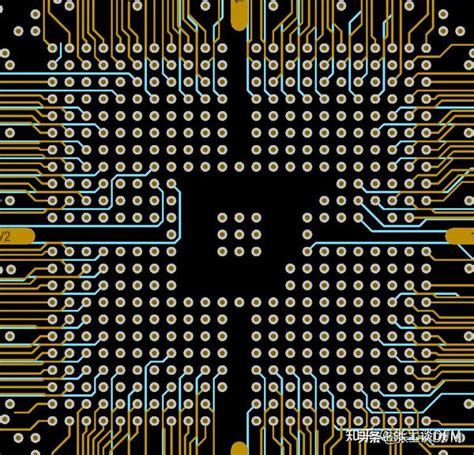
Thermal Management Solutions Using Ceramic-Based PCBs
In the realm of modern electronics, the demand for efficient thermal management solutions has become increasingly critical. As electronic devices continue to shrink in size while growing in functionality, the heat generated by these components poses a significant challenge.
One innovative solution that has emerged to address this issue is the use of ceramic-based printed circuit boards (PCBs).
These advanced materials offer superior thermal conductivity, making them an ideal choice for applications where heat dissipation is paramount.
Ceramic-based PCBs are constructed using ceramic substrates, such as aluminum oxide (Al2O3), aluminum nitride (AlN), or beryllium oxide (BeO).
These materials are renowned for their excellent thermal properties, which significantly surpass those of traditional FR-4 substrates commonly used in standard PCBs.
The high thermal conductivity of ceramic materials allows for efficient heat transfer away from heat-generating components, thereby enhancing the overall performance and reliability of electronic devices.
Moreover, ceramic-based PCBs exhibit exceptional thermal stability, which is crucial for maintaining performance in high-temperature environments. Unlike conventional PCBs, which may warp or degrade under extreme heat, ceramic substrates maintain their structural integrity, ensuring consistent performance over time. This characteristic is particularly beneficial in industries such as aerospace, automotive, and power electronics, where devices are often subjected to harsh operating conditions.
In addition to their thermal advantages, ceramic-based PCBs offer several other benefits that make them an attractive choice for various applications.
For instance, they possess excellent electrical insulation properties, which help prevent electrical interference and ensure signal integrity. This is particularly important in high-frequency applications, where maintaining signal clarity is essential. Furthermore, ceramic substrates are inherently resistant to chemical corrosion, making them suitable for use in environments where exposure to harsh chemicals is a concern.
Transitioning from traditional PCBs to ceramic-based alternatives can also lead to improvements in device miniaturization.
The superior thermal management capabilities of ceramic materials allow for the integration of more components in a smaller space without the risk of overheating. This is a significant advantage in the design of compact electronic devices, where space is at a premium.
Despite these advantages, it is important to acknowledge that ceramic-based PCBs are not without their challenges.
The manufacturing process for ceramic substrates is more complex and costly compared to traditional materials, which can result in higher production costs. However, the long-term benefits of improved thermal management and enhanced device reliability often outweigh these initial expenses, particularly in high-performance applications.
In conclusion, ceramic-based PCBs represent a significant advancement in thermal management solutions for modern electronics. Their superior thermal conductivity, stability, and electrical insulation properties make them an ideal choice for applications where efficient heat dissipation is critical. While the transition to ceramic substrates may involve higher initial costs, the long-term benefits in terms of device performance and reliability are substantial. As the demand for more powerful and compact electronic devices continues to grow, the adoption of ceramic-based PCBs is likely to become increasingly prevalent, driving further innovation in the field of thermal management solutions.


